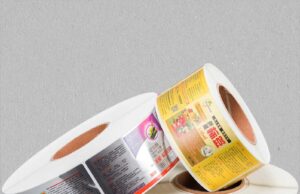
For anyone who likes to take photographs of special moments, preserving those images with a digital photo book is an ideal way to ensure lasting memories. Digital photo books have come a long way in terms of both affordability and quality, meaning that now it is easy to get professional results right in the comfort of your own home.
Benefits of Photo Books
Photo books are an ideal way to keep your memories preserved and vibrant for years to come. They are a tangible reminder of your past, allowing you to share these moments with friends and family. As collector’s items, they become more valuable as time passes – becoming not only a reminder of the past but also an investment for your future.
They offer several significant benefits and can outlast printed photographs by decades even under the worst conditions and mishandling. They have high clarity, vibrancy in color, greater durability, flexibility in organization layout, the ability for family members to interact with the story being told within the pages, and the capacity for updating down the road if needed.
Photo books make great gifts and allow you to preserve important images from special occasions such as weddings or milestone birthdays, anniversaries, or other significant events. With their high-quality paper stocks that are crafted to last longer than conventional paper prints, they will easily fit any home décor while enhancing your living space with beautiful visuals that take you back through the years each time you flip through them.
Types of Photo Books

With so many available options, it is important to understand the differences in materials and bindings to ensure that your photo book will stay safe while being used and displayed.
Soft Cover
Softcover books are usually printed on card stock, which provides more protection than regular paper. The cardstock may also be laminated for extra durability, making them a great choice for protecting photos for longer periods of time. These books are perfect for showcasing everyday life events.
Hard Cover
Hardcover books are printed on thicker card stock (300 gsm) or artistic photo paper, which makes them ideal for preserving your best memories over time. Tougher binding styles, like self-stitching or lay-flat materials, can make hardcover photo books last even longer while being displayed and used regularly.
Layflat
Layflat photo books are typically bound methodically with adhesive glue so that the book opens flat without having to pull apart pages from the binding––a great solution for larger sizes of 11×14” or bigger. They are printed in professional quality papers (ostensibly 230 gsm) on either glossy or matte lamination finishes as well as various levels of thicknesses for varied durability purposes.
How To Store Your Photo Book

Storing your photo book correctly is key to ensuring it stays safe, and in good condition, for years to come. To get the most out of your investment, it’s important to practice proper photo book storage techniques. Follow the steps below to ensure your photo books last a lifetime:
1. Choose an appropriate storage space
Select a dry, cool location away from direct sunlight or fluorescent lights which can cause fading and yellowing over time. Storage in a temperature and humidity-controlled area will help preserve the cover paper and ink longevity of the pages.
2. Keep books off of unfinished surfaces

Unfinished wood shelves and surfaces exposed to normal indoor humidity fluctuations and high temperatures should be avoided when storing your books as they may attract acid over time which can damage pages or cause discoloration. It is best to use non-acidic shelving material such as metal or vinyl-lined wood cabinets, plastic or acrylic risers or stands when displaying or storing your books long-term.
3. Protect from dust & pests
If stored long term, wrap each item individually in an archival quality fabric cover before adding them to boxes for storage. Use clean containers for storage such as archival quality boxes made from acid-free materials with tightly fitting lids that will protect items from moisture damage, air pollutants, and household pests like moths or silverfish that are attracted to stored items containing cellulose (paper). Keep these boxes stored off floors and away from walls where furniture may lean against them exposing them directly to light sources causing fading over time because of prolonged UV exposure.
4. Back Up Your Pictures

Always back up your photos online or onto an external hard drive. Although most cloud services have robust security measures in place, you should also take extra precautions such as creating multiple copies of your photos so that if one copy is damaged or lost, you have additional backups ready.
5. Use Password Protection For Your Storage Device
If you are storing your pictures on a USB flash drive or external hard drive, it is important to use password protection for added security. This will prevent any hackers from accessing the pictures without permission. If possible, make sure that the passwords consist of at least 8 characters including uppercase letters, lowercase letters, and numbers.
6. Clean Your Photo Book Gently

If your photo book gets dusty or dirty over time, it’s important to clean it without causing permanent damage to the paper or images within it. Start by using a soft brush to gently remove any dirt or debris from its surface then use a slightly damp cloth—never use water directly—to wipe away fingerprints or smudges on photos without removing their ink coating. If necessary, consult an expert before using any chemical cleaners on particularly sensitive material like delicate pages and pictures; never try anything too aggressive at home!
Conclusion
In conclusion, it’s important to be mindful of the risks associated with photo books and scrapbooks in order to properly preserve them for future generations. The best way to protect and preserve your priceless mementos is to take necessary precautions.
By using acid and lignin-free paper, plastic sleeve photo bags, archival or acid-free albums, book covers, and sleeves, as well as proper storage techniques such as low humidity and moderate temperatures, you can ensure that your beloved photo books last a lifetime.









